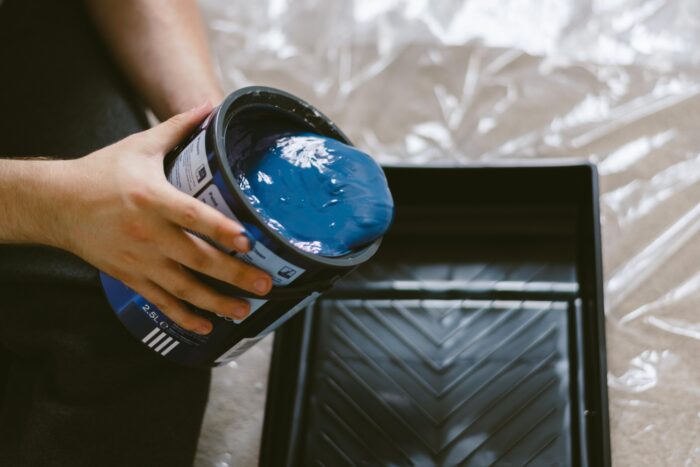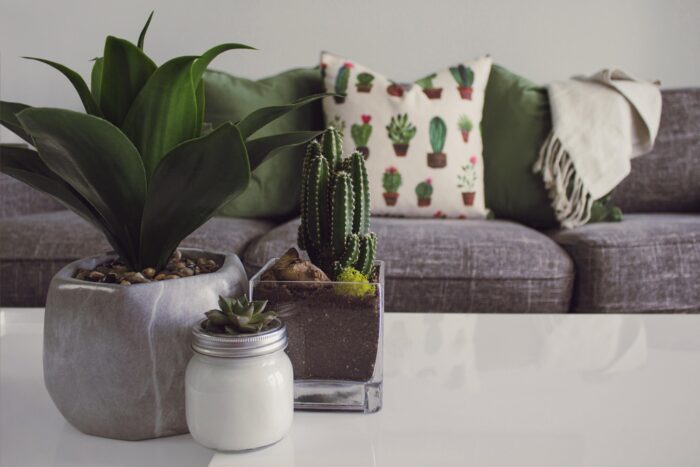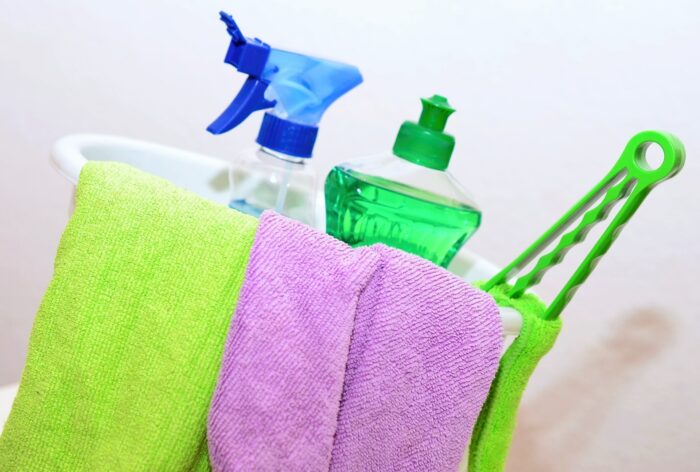MARCHING INTO SPRING: 6 PORCH IDEAS THAT MAKE YOU WANT TO BE OUTSIDE
Enjoy the beauty of the season from the comfort of your own doorstep with some fresh design tips.
READ MOREFrom the materials used to build your home to the furnishings, appliances and utilities you use every day, everything in your house can impact your health. Let’s take a look at ten ways you can make your house a healthier one in 2019.

Volatile organic chemicals (VOCs) are emitted gases that can come from thousands of different solids and liquids found in homes. The Environmental Protection Agency (EPA) reports that VOCs can be up to ten times higher indoors.
Curb your exposure to these harmful gases by making sure you use Low- or Classified Zero-VOC products. These products contain less grams of VOCs per liter. A good way to reduce VOCs in your home is choosing paint that has been certified low-VOC.
Another tip by the EPA to cut down on VOC emission in your home is to reduce the amount of time you keep high VOC products in your home. Rather than store items such as gasoline, paint strippers and kerosene for space heaters for a long period of time purchase only what you need or will use at a time.

There are several chemical-free ways to improve the indoor air quality of your home. Using things like central air conditioning, air purifiers, fans and whole house fans will help you recycle air quickly. There are also plenty of all-natural options to improve air quality:
Click here to take an interactive tour of the Environmental Protection Agency’s Indoor Air Quality Demo House.
Protect your drinking water and keep harmful chemicals out of your body by using a water filtration system. Water filters help remove chemicals, minerals and other unwanted elements from your drinking water.
Today, there are several reasonably priced purifiers that are easy to install, like this faucet filter by PUR. Also, if your refrigerator has a water dispenser or an ice maker, remember to replace the water filter regularly.

There are always a few areas in your home that stay damp or are often exposed to moisture. These places have the potential to grow mold in higher concentrations, which can impact your health. Knowing where to look for mold and how to properly remove it from your home will help prevent illnesses and allergies that are triggered by increased exposure to certain types of mold.
Be sure to check these areas for mold and clean them often:
To guarantee you’re getting a product that is safe for your home, research manufacturers to learn both how they harvest the materials used for their products and how their products are produced. Finally, remember the three “R’s” when it comes to choosing materials that promote greener, healthier living:
Soffits form the flat area under the eaves, bridging the gap between the siding and roof lines and acting as a barrier of protection from outside elements. Vented aluminum soffits are virtually maintenance-free, last for years and will provide much-needed ventilation to and from the attic.
Proper attic ventilation can have many positive impacts on your home and your health:
Rollex Aluminum Stealth Soffit is an environmentally friendly option that’s perfectly vented to promote continuous airflow. It’s low maintenance, environmentally friendly, durable and comes with a best in class warranty.
While there are several insulation options to choose from, many of them can bring formaldehyde and other toxic chemicals into your home. Use these tips to find healthier insulation options:
Protect your home from weather extremes with steel siding. It’s a strong alternative for your home’s exterior and is made from one of the most commonly recycled materials in the world. Steel siding doesn’t contribute to deforestation as wood siding does, and it doesn’t contain silica dust made from fiber cement that has cancer-causing agents.
Rollex steel siding is one example of 100% recyclable steel siding that is extremely durable and safe to install. It offers the protection you need with a maintenance-free, natural looking wood-grain finish in your choice of designer colors. Plus it has a limited lifetime warranty for your peace of mind.
While every home has different needs, cork and bamboo are great flooring options for both your health and the environment. They are also made from highly sustainable wood.
But if you are interested in other wood flooring options, it’s important to note adhesives used in manufacturing plywood and other wood composites often contain formaldehyde, which is toxic. Be sure to search for formaldehyde-free alternatives.
The most widely used cabinet and countertop materials, such as laminate, can release chemicals for long periods of time after installation, with one of the most prevalent chemicals being formaldehyde.
Here are seven eco-friendly cabinet options that are green, safe and growing in popularity. If your countertops need a facelift, check out these five green kitchen countertop alternatives where you will find options ranging from recycled glass to paper composite.
Remember to consider these ten areas for improvement, and you will be well on your way to turning your house into a healthier, more eco-friendly home. Need more inspiration? Start the path toward improvement with your home’s exterior.Click here to see examples of beautiful custom projects using Rollex materials.